This month we’re showcasing Canadian history textbooks across the years! On display inside the glass table on the ground floor of the library, you will find a selection of textbooks from nearly every decade since 1867.
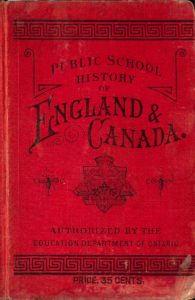 In early Ontario schools, the purpose of history lessons was “to arouse in the pupil an interest in historical characters and events, to give him a knowledge of his civil rights and duties, to stimulate a love of high ideals of conduct, and to enable him to appreciate the logical sequence of events” (Ontario Department of Education, Regulations, Courses of Study, and Examinations of the Public and Separate Schools, 1915). Teachers were advised that pupils should not be confused by unnecessary details, nor should they be require to memorise notes – because forcing pupils to memorise notes would foster a dislike of history.
In early Ontario schools, the purpose of history lessons was “to arouse in the pupil an interest in historical characters and events, to give him a knowledge of his civil rights and duties, to stimulate a love of high ideals of conduct, and to enable him to appreciate the logical sequence of events” (Ontario Department of Education, Regulations, Courses of Study, and Examinations of the Public and Separate Schools, 1915). Teachers were advised that pupils should not be confused by unnecessary details, nor should they be require to memorise notes – because forcing pupils to memorise notes would foster a dislike of history.
Pupils in early Ontario schools did not only study Canadian history – British history was also a key component of early curricula. This is reflected in the earliest textbooks on display: A History of Canada and of the Other British Provinces in North America (1866, cover 1872) and the Public School History of England & Canada (1886). In fact, this second book is mostly about England – only the last quarter is about Canada!
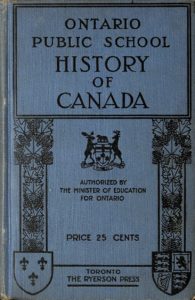 By the 1900s, however, approved history textbooks placed more focus on Canadian history. Examples of textbooks from this period include: A Canadian History for Boys and Girls (1900), the Ontario High School History of Canada (1914), and the Ontario Public School History of Canada (1921).
By the 1900s, however, approved history textbooks placed more focus on Canadian history. Examples of textbooks from this period include: A Canadian History for Boys and Girls (1900), the Ontario High School History of Canada (1914), and the Ontario Public School History of Canada (1921).
British history nevertheless remained an important component of the history curriculum: Form III (grades 5 and 6) studied early Canadian history and British history up to the Norman conquest, while Forms IV (grades 7 and 8) and V (grades 9 and 10) studied major events in Canadian and British history, with an emphasis on recent history – which at the time meant the 1800s! Civics and government were covered in Form IV, and history was a mandatory subject of study through Form V.
Textbooks in these days were quite different from what we expect a school textbook to look like. They were text-heavy, with very few pictures, and did not include exercises or activities to engage pupils with the content. While some of these textbooks were used as early as elementary school, they more closely resemble something today’s students might expect to encounter in high school or university!
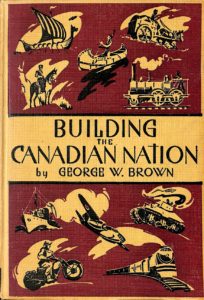 In 1937, the government of Ontario made significant changes to the curriculum. It was in 1937, for example, that students were placed into grades instead of forms. It was also in 1937 that Social Studies was introduced as a course of study: instead of teaching history and geography as separate subjects, they were now combined into a single class. Topics were presented to pupils gradually, starting with the home environment in grade 1 and expanding to the local community, the province, and finally to all of Canada in grade 6.
In 1937, the government of Ontario made significant changes to the curriculum. It was in 1937, for example, that students were placed into grades instead of forms. It was also in 1937 that Social Studies was introduced as a course of study: instead of teaching history and geography as separate subjects, they were now combined into a single class. Topics were presented to pupils gradually, starting with the home environment in grade 1 and expanding to the local community, the province, and finally to all of Canada in grade 6.
Textbooks were also changing. Covers, such as this one from Building the Canadian Nation (1942), were now being illustrated. While books from this period were still very text-heavy, they also included many more pictures than earlier books. Some, such as Canada: Then and Now (1954), were even beginning to use colour illustrations. Books from this period were also starting to engage students directly by including supplementary activities, end-of-chapter questions, and lists of suggested readings. Social studies curricula in the 1940s and 1950s also included guidance for teachers about the sorts of activities they could use in the classroom – these included activities such as creating picture books or making a “house” in the corner of the classroom.
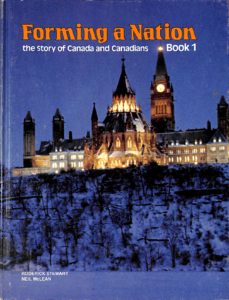 In the 1970s, the curriculum again changed. While elementary school students continued to take social studies, students in grades 7-10 once again had two separate subjects: history and geography. History classes continued to focus almost exclusively on Canadian history; however, curricula now also explicitly acknowledged that ethnocentrism was often present in the study of history. It was understood that students of history would “discover something about attitudes and prejudices – [their] own and those of others” (Ontario Ministry of Education, History – Senior Division, 1970).
In the 1970s, the curriculum again changed. While elementary school students continued to take social studies, students in grades 7-10 once again had two separate subjects: history and geography. History classes continued to focus almost exclusively on Canadian history; however, curricula now also explicitly acknowledged that ethnocentrism was often present in the study of history. It was understood that students of history would “discover something about attitudes and prejudices – [their] own and those of others” (Ontario Ministry of Education, History – Senior Division, 1970).
By this time, textbooks were becoming larger in dimension – books such as Forming a Nation: The Story of Canada and Canadians (1977) and Flashback Canada (1987) were twice the size of early history textbooks! Textbooks from this period put still more effort into actively engaging students. By this point, the inclusion of activities, exercises, and end-of-chapter questions had become routine. Textbook material was also much more visual than before, including not only photographs and maps, but also diagrams and graphs.
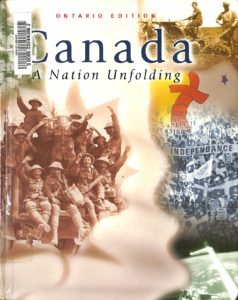 This trend continued in recent textbooks, such as Canada: Understanding Your Past (1990) and Canada: A Nation Unfolding (2000). Modern Canadian history textbooks include summaries of a chapter’s material, pictures, maps, diagrams, and even comic strips to help convey concepts to students. As with textbooks from the second half of the 20th century, activities, exercises, and end-of-chapter questions are included – and have come to be an expected component of any school textbook. Modern textbooks are also more likely to acknowledge the darker parts of Canadian history, such as the history of residential schools.
This trend continued in recent textbooks, such as Canada: Understanding Your Past (1990) and Canada: A Nation Unfolding (2000). Modern Canadian history textbooks include summaries of a chapter’s material, pictures, maps, diagrams, and even comic strips to help convey concepts to students. As with textbooks from the second half of the 20th century, activities, exercises, and end-of-chapter questions are included – and have come to be an expected component of any school textbook. Modern textbooks are also more likely to acknowledge the darker parts of Canadian history, such as the history of residential schools.
These books will be on display in the glass table on the ground floor of the OISE Library through the end of July.
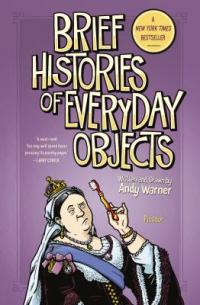 Brief Histories of Everyday Objects, Andy Warner, 2016
Brief Histories of Everyday Objects, Andy Warner, 2016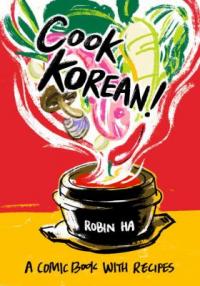
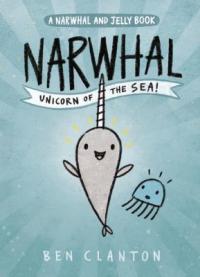 Narwhal: Unicorn of the Sea!, Ben Clanton, 2016
Narwhal: Unicorn of the Sea!, Ben Clanton, 2016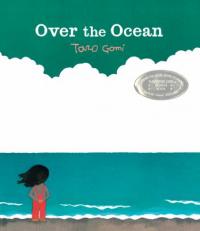
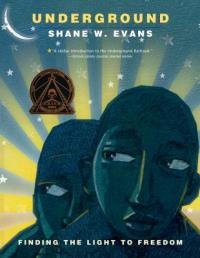 Underground, Shane W. Evans, 2015
Underground, Shane W. Evans, 2015
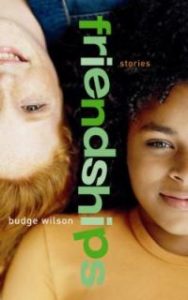
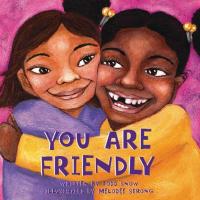

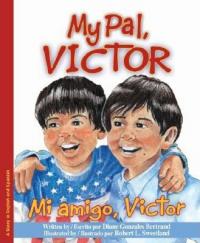
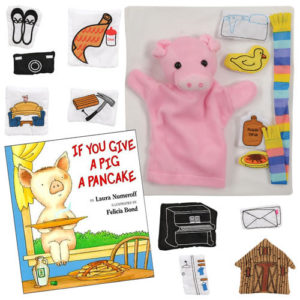





 Exploring major issues in education through an international and intercultural lens, Comparative and International Education introduces students and scholars to research in this field. Comparative and International Education offers a starting point to challenge students and scholars to reflect and think more broadly on how to improve educational systems and classroom practices. In twelve theme-based chapters, the book introduces main ideas and literature on the field developed over a period of nearly two centuries. Including topics important for new and seasoned educators, the themes are teaching and learning, the child’s right to education, alternative schooling, gender, curriculum and pedagogy, school improvement, Indigenous knowledge, multiculturalism, conflict resolution, and global citizenship.
Exploring major issues in education through an international and intercultural lens, Comparative and International Education introduces students and scholars to research in this field. Comparative and International Education offers a starting point to challenge students and scholars to reflect and think more broadly on how to improve educational systems and classroom practices. In twelve theme-based chapters, the book introduces main ideas and literature on the field developed over a period of nearly two centuries. Including topics important for new and seasoned educators, the themes are teaching and learning, the child’s right to education, alternative schooling, gender, curriculum and pedagogy, school improvement, Indigenous knowledge, multiculturalism, conflict resolution, and global citizenship.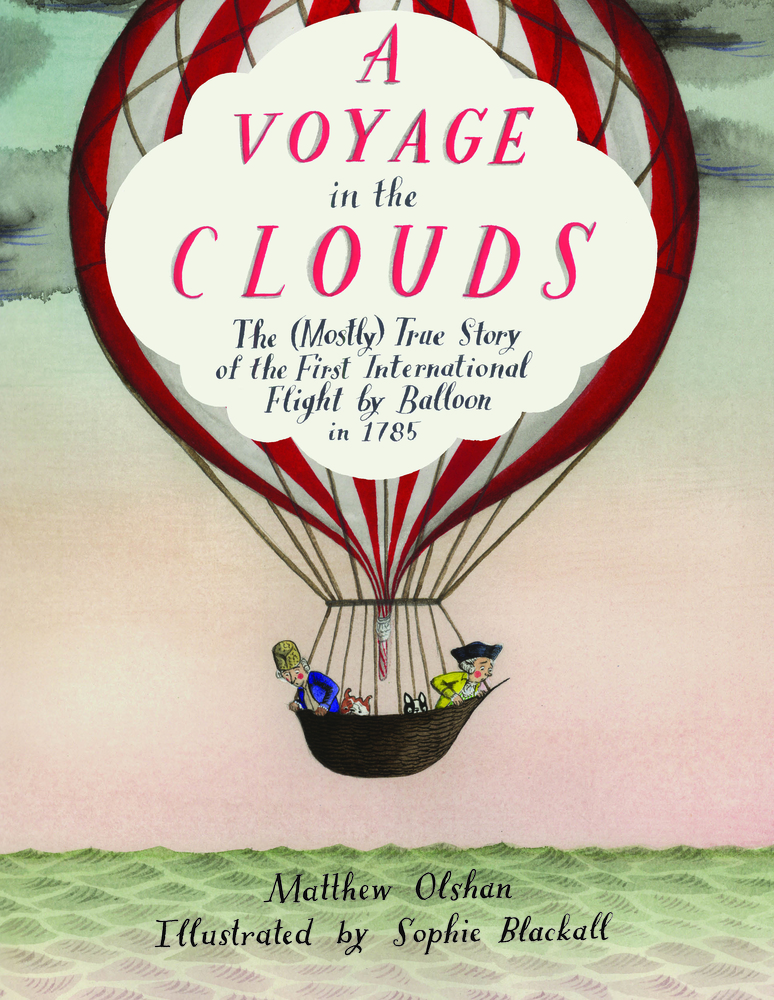 The air is frosty. The wind is undecided. It looks like a fine day for Dr. Jeffries and his pilot Monsieur Blanchard to take flight. Travelling on a hot air balloon, the duo plans to fly from England to France, the first continental feat of its kind. When Dr. Jeffries finds out that the balloon could only carry the weight of one man and one dog, trouble and peril lie ahead. Find out what the duo will do to fit the scale with their dogs and luggage in tow. Based on the historical feat of Dr. John Jeffries and Jean-Pierre Blanchard on January 7th, 1785, the story retells the world’s first international flight by crossing the English Channel in a balloon.
The air is frosty. The wind is undecided. It looks like a fine day for Dr. Jeffries and his pilot Monsieur Blanchard to take flight. Travelling on a hot air balloon, the duo plans to fly from England to France, the first continental feat of its kind. When Dr. Jeffries finds out that the balloon could only carry the weight of one man and one dog, trouble and peril lie ahead. Find out what the duo will do to fit the scale with their dogs and luggage in tow. Based on the historical feat of Dr. John Jeffries and Jean-Pierre Blanchard on January 7th, 1785, the story retells the world’s first international flight by crossing the English Channel in a balloon. “Once upon a time there was a ship that sailed beside the sun with very important people on board.” Written in three parts, the story of As Time Went By tells the tale of a steamship sold and abandoned by people and later rediscovered by a family who cherished it dearly. A 2017 Batchelder Honor Book and ALA Notable Book, the book captures the evolving functions of the ship, the spirit of reinvention and the importance people place on things, such as from luxury to exclusivity and from stewardship to inclusion. Follow Sanabria’s watercolor and ink illustrations to learn about the steamship.
“Once upon a time there was a ship that sailed beside the sun with very important people on board.” Written in three parts, the story of As Time Went By tells the tale of a steamship sold and abandoned by people and later rediscovered by a family who cherished it dearly. A 2017 Batchelder Honor Book and ALA Notable Book, the book captures the evolving functions of the ship, the spirit of reinvention and the importance people place on things, such as from luxury to exclusivity and from stewardship to inclusion. Follow Sanabria’s watercolor and ink illustrations to learn about the steamship.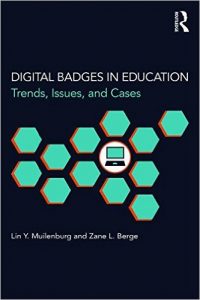 In Digital Badges in Education, editors Muilenburg and Berge introduce the idea of a digital badge, an online-based visual representation that uses detailed metadata to signify learners’ specific achievements and credentials both in the classroom and workplace learning. With a focus on learning design and assessment, the book provides theoretical concepts and concrete cases in various contexts and explores the functions, values, and problems with badging systems. Introduced in twenty-five chapters, the book highlights key lessons learned from a broad spectrum of learning challenges to assist educators to help readers formulate solutions during the development of their digital badges learning projects. Made possible by the emerging culture of learning connected to digital systems in the twenty-first century, these highly social systems present a new culture of reputation to influence how we build identifies online that others find credible and meaningful.
In Digital Badges in Education, editors Muilenburg and Berge introduce the idea of a digital badge, an online-based visual representation that uses detailed metadata to signify learners’ specific achievements and credentials both in the classroom and workplace learning. With a focus on learning design and assessment, the book provides theoretical concepts and concrete cases in various contexts and explores the functions, values, and problems with badging systems. Introduced in twenty-five chapters, the book highlights key lessons learned from a broad spectrum of learning challenges to assist educators to help readers formulate solutions during the development of their digital badges learning projects. Made possible by the emerging culture of learning connected to digital systems in the twenty-first century, these highly social systems present a new culture of reputation to influence how we build identifies online that others find credible and meaningful.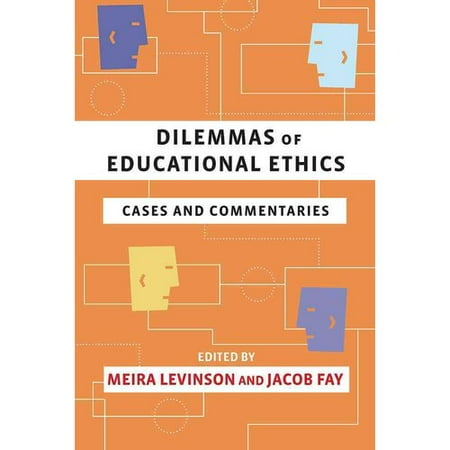 Dilemmas of Education Ethics explores the questions of ethics, justice, and equity that confronts educators and policy makers. Grounded in a new interdisciplinary approach, this book provides practical alternatives to negotiate the complexities inherent in educational decision making. By encouraging open discussion on the values and principles, the book provides cases and commentaries on challenging ethics, justice, and equity decision making such as the discussion on the hierarchy of social economic classes with varying social and economic capital on the design of a new school assignment plan. Written with urgency, the book includes methodological and pedagogical models and guidance on reflective analysis of educational ethics to enable scholars, policy makers, and practitioners to act on this in productive and nuanced ways.
Dilemmas of Education Ethics explores the questions of ethics, justice, and equity that confronts educators and policy makers. Grounded in a new interdisciplinary approach, this book provides practical alternatives to negotiate the complexities inherent in educational decision making. By encouraging open discussion on the values and principles, the book provides cases and commentaries on challenging ethics, justice, and equity decision making such as the discussion on the hierarchy of social economic classes with varying social and economic capital on the design of a new school assignment plan. Written with urgency, the book includes methodological and pedagogical models and guidance on reflective analysis of educational ethics to enable scholars, policy makers, and practitioners to act on this in productive and nuanced ways.